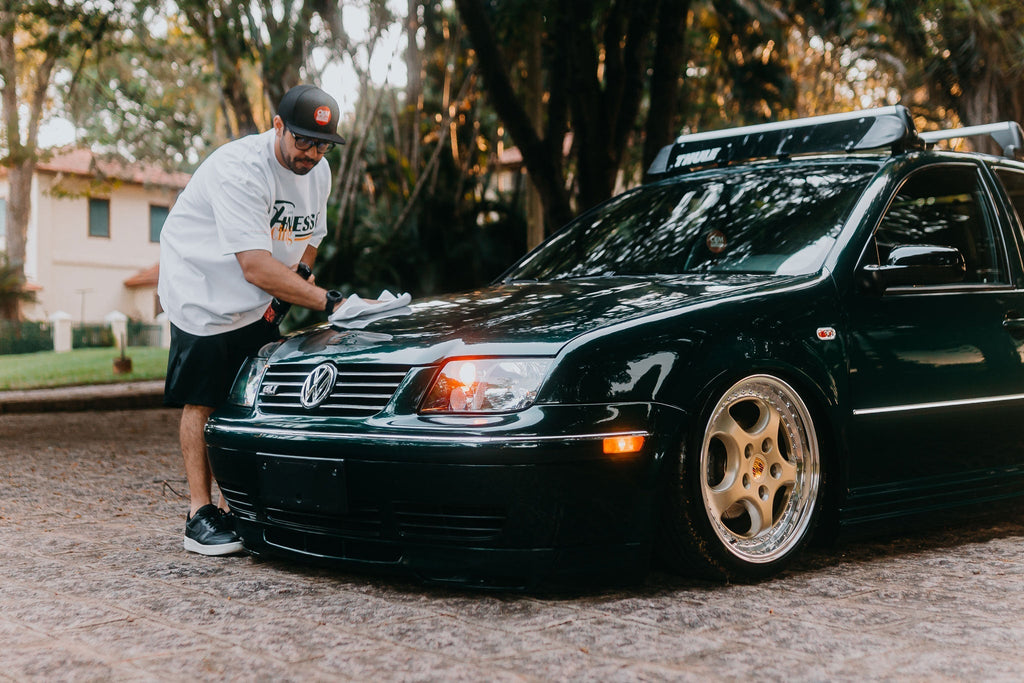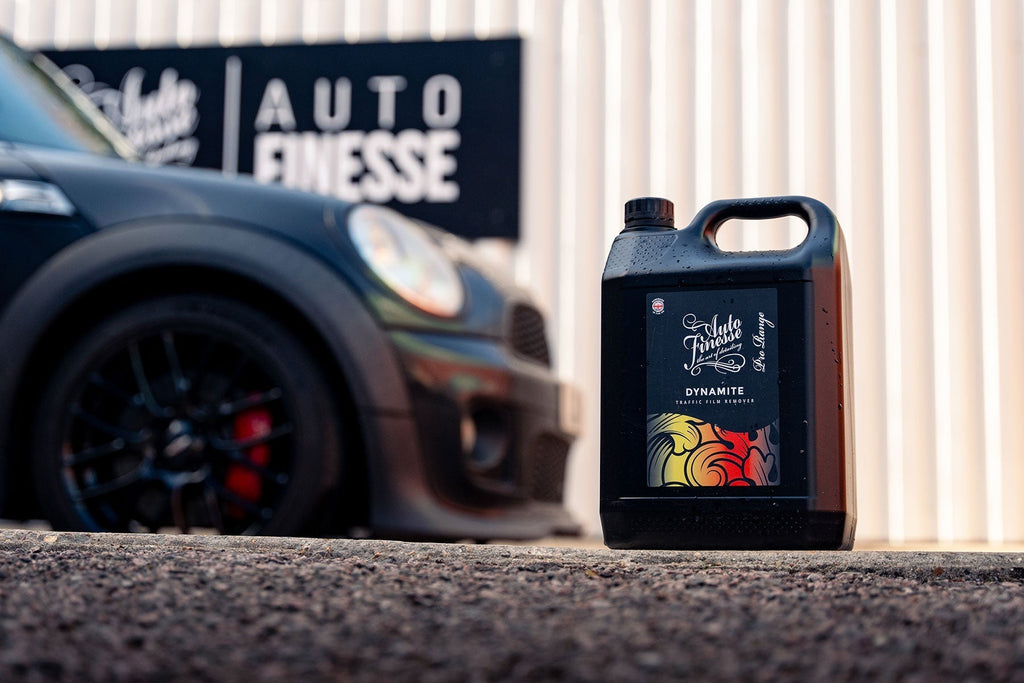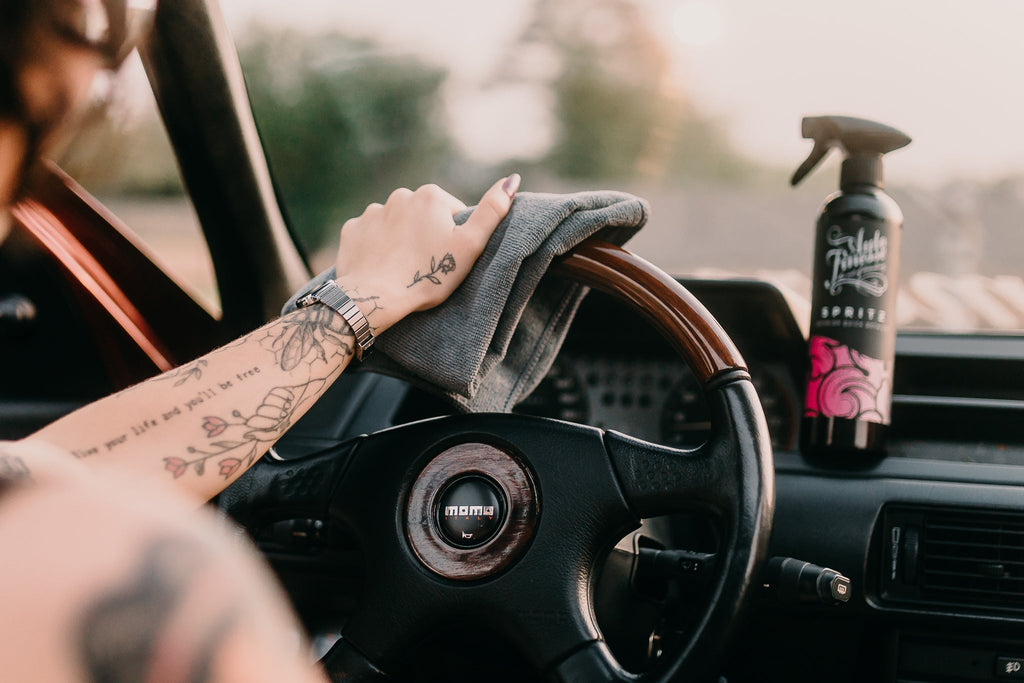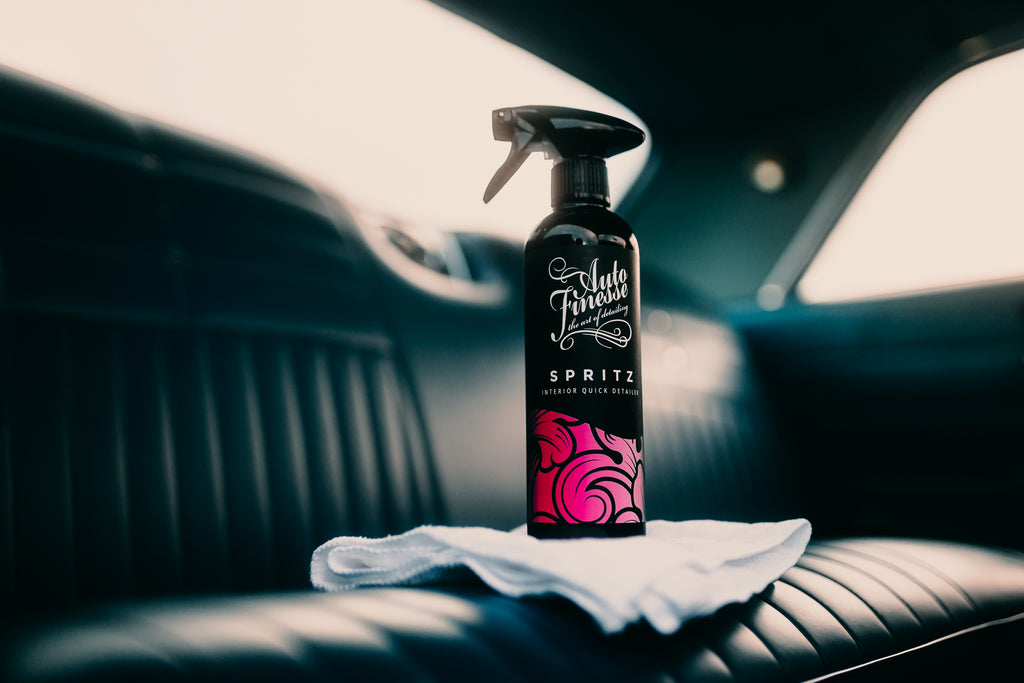Getting Your Daily Driver Winter-Ready
Performance enthusiasts often praise the benefits of cold winter air for tuning, but that excitement doesn’t quite extend to car detailing. Winter is undoubtedly the toughest season for maintaining your vehicle's pristine condition. That’s why it’s crucial to prep and protect your car before the harsh weather takes its toll. And there's no need to wait until the temperature plummets—getting your car ready during the lead-up to winter is the best approach. Here’s a quick guide to everything you need to know, along with the products that will help you weather the cold months with ease. With this preparation, you’ll keep things running smoothly until spring rolls around!

How Does Winter Detailing Differ?
Your detailing routine typically consists of two key components: preparation and protection, followed by ongoing maintenance. While these stages may occur at different times, they are closely interconnected and equally essential—especially during the winter months.
Winter maintenance washes come with their own unique challenges compared to the milder seasons. For instance, while an early Sunday morning wash might be part of your routine in the spring or summer, it’s better to wait until midday during the colder months. This simple adjustment helps avoid the risk of water freezing on your car during the wash. Using warm water in your buckets becomes a winter must-have, and selecting pH-neutral products ensures that protective layers remain intact. We’ll delve deeper into these tips in our dedicated winter maintenance guide.
Here, however, our focus is on the crucial first steps: preparing your car for winter. Laying this groundwork makes ongoing maintenance more manageable and safer for your paintwork throughout the cold season.
Keep in mind, winter detailing isn’t just about the drop in temperature. As the colder months approach, road contaminants dramatically increase in concentration. Rain, sleet, and snow amplify the risk of these contaminants—such as road salt and grit—clinging to your vehicle. While these substances are vital for road safety, they can be harsh and abrasive on your car’s paintwork. Preparing your vehicle in advance is the best defense against the inevitable challenges winter brings.

When you consider all of this, preparing your car for winter serves two main purposes. First, it’s about applying and reinforcing protection to help your car withstand the harshest weather conditions. Second, it’s focused on safety, ensuring that your tyres remain in top condition, your wheels are protected against corrosion, and your glass provides optimal visibility—especially vital when daylight fades as early as 3 PM.


Things To Keep In Mind...
Exterior
The harsher the contaminants, the harder and riskier they are to remove. That’s why the best time to prepare your car for winter is at the very start of the season. Once everything is thoroughly cleaned and protected, the primary goal is achieved: preventing grime from adhering to or directly contacting your paintwork. If it can't stick, it can't become ingrained, making your car much easier to maintain with every subsequent wash.



When cleaning your paintwork, ensuring a safe, swirl-free wash is always a priority, and that’s why an effective pre-wash routine is arguably the most essential step. In autumn, road contaminants begin to increase compared to the summer months. While these may not yet be as harsh or concentrated as during peak winter, using powerful yet paint-safe pre-wash cleaners—such as Dynamite Traffic Film Remover and Citrus Power Bug and Grime Remover—is still vital as the seasons change and the weather takes a harsher turn.



Using Avalanche Snow Foam, especially to target hard-to-reach areas and loosen stubborn dirt, is also crucial for an effective clean.




Deep Cleaning
The main difference during the wash stages is focusing more on the harder-to-reach areas. Taking the extra step to remove the wheels for a deep clean, for example, can really pay off in terms of gaining better access. This allows you to thoroughly clean and decontaminate the barrel, inner tyres, and behind the spokes.
It's also important to remember that caring for wheels is similar to maintaining paintwork. Protection, especially during the winter, is key. Using products like our Caramics Wheel Protection Kit or Mint Rims Wheel Wax on every area is a great idea. For more tips on cleaning and protecting your wheels, be sure to check out our full guide here.



One major benefit of removing the wheels is gaining access to the inner arches and chassis. In many cases, removing heavy contamination like mud and road salt in these areas is just as much a safety concern as it is for appearance. It also allows you to use techniques like applying Dressle All Purpose Dressing to your arch liners — this makes it much easier to blast away the heavy winter grime during your next maintenance wash. The key takeaway is that cleaning and protecting areas that aren't immediately visible is just as crucial to ensuring your car is ready for the winter months.



Paintwork Decontamination And Correction
When it comes to decontamination and paint correction, preparing your car for winter is similar to a full detail at any other time of the year. The steps taken to apply your final protective layers will follow the same process. At a minimum, you'll need to use Iron Out Contaminant Remover to break down metal particles, and ObliTARate Tar and Glue Remover to eliminate any sticky residues. After that, a thorough clay treatment is essential, using Glide Clay Lube and a Clay Bar or Clay Pad to lift any remaining ingrained contaminants from the surface.




The paint correction process will follow the same approach, as it always depends on the condition of your paintwork. This is crucial because your final protective layers will effectively seal in any imperfections left behind. Therefore, it's essential to ensure that all defects are properly addressed using the right products before applying the protection.

It's also important to remember that the products you use for surface preparation should align with your choice of final protection. For instance, using Tripple All In One Polish (which contains Carnauba wax) before applying Radiance Carnauba Crème, Glisten Spray Wax, or one of our Signature Hard Waxes is a highly effective approach. However, if you're opting for Caramics Paint Protection, it's best to use a product that doesn’t contain wax, such as One Step All In One Compound or our Revitalise System, to ensure optimal results.


Paintwork Protection
It's clear that paint protection is essential during winter, especially for daily drivers. Remember, your car is more prone to scratches in the colder months due to the increased road debris. It's crucial to keep moisture out of scratches and away from the paintwork, as water that seeps in can freeze and thaw repeatedly, leading to issues like oxidation or even paint cracking.
When it comes to choosing the best LSP (last step product), there are many opinions on the matter. So, what's the right choice? Should you go for a wax or a ceramic coating? Ultimately, the decision is up to you – after all, it’s your car!



Both wax and SiO2 coatings offer effective protection, but it’s clear that SiO2 coatings provide more durable, long-lasting protection and require less maintenance. However, some people still prefer the finish that their favourite wax gives — it’s really a matter of personal choice.
You can apply wax over a ceramic coating, but not the other way around. This is because a ceramic coating is a liquid polymer that bonds chemically with the paint at a molecular level, essentially becoming part of the lacquer. Wax, on the other hand, bonds physically to create a protective layer on top. While this enhances the optical finish, it prevents a ceramic coating from bonding in the same way, and blocks contaminants from reaching the paint. Once a ceramic coating is fully bonded, adding a layer of wax is no different from layering it over uncoated paint.
During the winter months, for a daily driver, we typically recommend Caramics protection due to its superior durability, ease of maintenance, and exceptional water beading. Plus, Caramics offers a fantastic gloss that can be further enhanced with our other SiO2 products, like Caramics Shampoo and Caramics Gloss Enhancer.



Soft Top Convertible Roofs
Protection isn't just important for paintwork and wheels; convertible roofs also require attention. These roofs are particularly prone to attracting increased grime from the roads, and if water is allowed to seep in, it can freeze, expand, and cause irreversible damage to the fibres.
The best way to protect your convertible roof is through prevention. Our Rag Top Protector creates a hydrophobic layer that repels water, salt, and road grime, preventing them from penetrating the fabric. Before applying the protection, it's essential to deep clean the roof, and for this, our Rag Top Cleaner and Upholstery Brush are the perfect tools.

Exterior Plastics & Trim
Many overlook the need to protect plastic trim and grilles, especially from UV radiation, which tends to intensify during the winter months. Cold weather can also make plastics more brittle, increasing their vulnerability to damage from water and grime infiltration.
Our silicone-based Revive Trim Dressing not only restores plastics to a fresh, subtle finish but also forms a water-resistant barrier to repel contaminants. The silicone-polymer blend offers added protection against the harmful effects of UV radiation, providing a comprehensive solution for maintaining plastic trim.


Protection In Other Areas
Finally, protecting the often-overlooked areas is always a good idea, but it's especially important during winter. Applying Tripple to door jambs, bonnet and boot shuts, and other hard-to-reach painted surfaces will not only clean and polish, but also provide a layer of Carnauba protection to prevent grime from bonding in the future.


Interior Cleaning
Preparing the interior for winter is similar to detailing at any other time, with the main focus being on protection and deep cleaning before applying it. During winter, more contaminants tend to be brought into the car, especially on carpets, mats, and seats. Start by thoroughly cleaning fabrics with Total Interior Cleaner, then apply our Caramics Interior Protection Kit to create a ceramic layer that shields against staining and makes maintenance much easier. It's also recommended to use Spritz Interior Detailer on dashboards and door cards to help repel dust and protect against UV damage.


While winter brings its own set of challenges, one of the most common issues is related to your health. Air conditioning systems can accumulate bacteria and fungus when not in use during the colder months. To prevent these from being blown into your face when spring arrives, it's essential to give your heater vents a quick spritz of Wipe Out Interior Disinfectant during your winter prep and at regular intervals in your maintenance routine.

Leather seats and trim are particularly prone to drying out in colder weather, making it crucial to nourish the surface after cleaning. Applying Hide Conditioner to restore essential oils is key to maintaining leather’s softness and flexibility, ensuring it stays in top condition throughout the winter.


A final interior tip is to wipe down your rubber seals with Dressle or Revive. This helps keep them lubricated, preventing them from sticking or tearing as the temperature drops.


Glass Protection
When it comes to safety, ensuring your glass is in optimal condition is crucial during winter. With longer nights, harsher weather, and more debris on the roads, visibility is already compromised more than in the summer months. While our Caramics Glass Protection Kit helps protect your glass from scratches, the main benefit is its hydrophobic layer that repels water, preventing grime from sticking—just like ceramic coatings do for paintwork. The best part? Our kit makes applying a ceramic coating to your glass easier than ever, thanks to the included special wipes.


You can easily maintain the hydrophobic layer on your exterior glass by topping it up with our Caramics Glass Cleaner during later washes. For interior glass, however, it's best to use Crystal Glass Cleaner to remove any films or residues, as a hydrophobic layer isn't needed on the inside.

Protecting Your Tyres
Lastly, the finishing touch to any detail is dressing your tyres. During winter, Satin Tyre Dressing not only provides a sleek, refined finish but also adds a crucial layer of protection against salt, road grime, and UV radiation. The water-based formula deeply penetrates the rubber, nourishing it from within, far beyond just the surface. It’s an essential product for year-round aesthetics, while also creating a non-sticky barrier to defend against the harsh winter elements.







